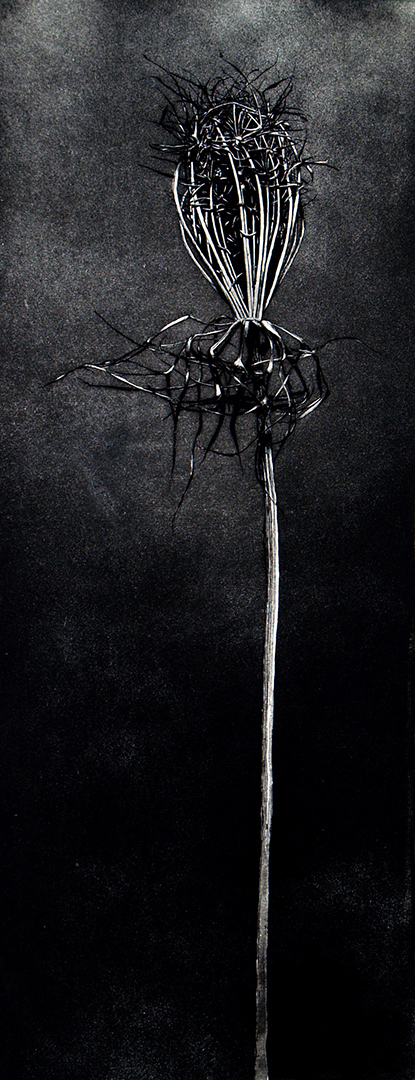Etching
A metal plate (copper or zinc) is covered with an acid resistant wax. An etching needle is used to draw the image into the wax resist – the drawing reveals bare metal under the resist. The plate is placed in acid, and the acid bites into the metal where it is exposed. The longer the plate is in the acid, the deeper the acid will bite, and the darker the line will print. The plate is inked, and the ink is pushed into the grooves bitten by the acid. Excess ink is removed from the plate, damp paper is placed over the plate, the plate is passed through the printing press, and the ink from the plate transfers to the paper. An etching has a sharper and cleaner line than drypoint, due to the action of acid on the metal plate.
Click an image to see in more detail





